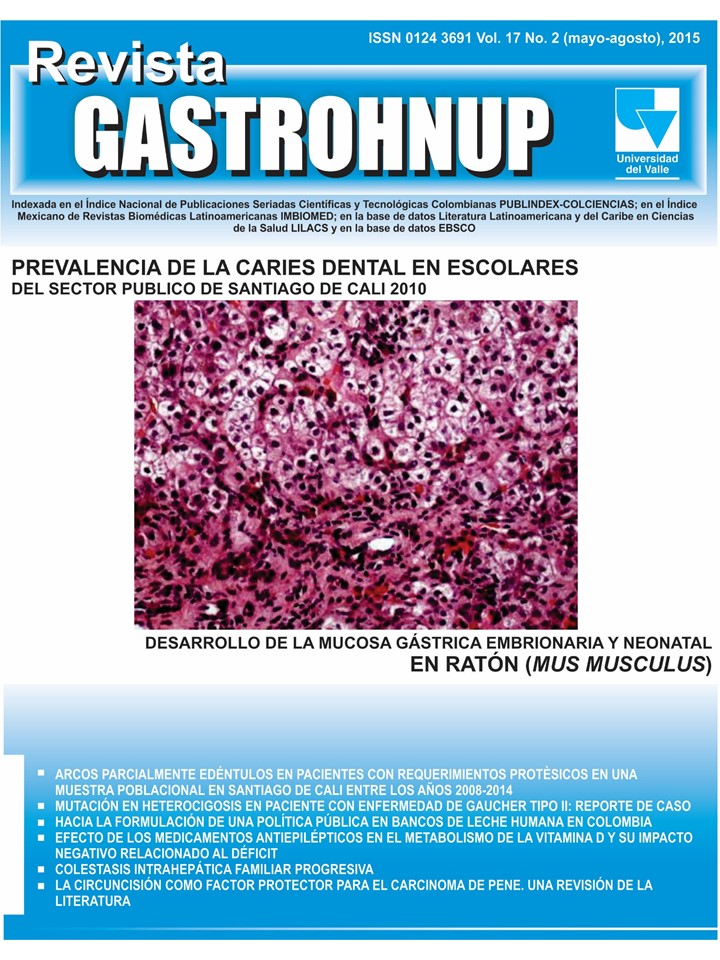HETEROZYGOUS MUTATION IN A PATIENT WITH GAUCHER DISEASE TYPE II: A CASE REPORT
Main Article Content
Gaucher disease is a lysosomal storage disorder
characterized by the accumulation of glucosylceramide
(glucocerebroside-GBA-) in macrophage cells on liver,
spleen, and bone marrow. Regularly, three major
phenotypes were distinguished. Type 1 is a chronic and
non-neurological form, accounting for 95% of cases. It
is a heterogeneous disease characterized by the
association of organomegaly (spleen, liver), bone fails
(pain, infarcts, osteonecrosis) and cytopenias
(thrombocytopenia, anemia and, rarely neutropenia).
Type 2 is the acute neurological form, characterized by
early onset (within the first year of life), brainstem
dysfunction, rapid progression and associated
organomegaly. Type 3 is the neurological sub-acute and
is characterized by progressive encephalopathy
(oculomotor apraxia, epilepsy and ataxia) associated
with the manifestations of the disease type 1 and with
onset in childhood or adolescence. Gaucher disease is
inherited and transmitted as an autosomal recessive and
is caused by mutations in the GBA gene (1q21), leading
to a defect in the activity of glucocerebrosidase (also
known as glucosylceramidase or acid alphaglucosidase).
Eventually, it is caused by mutations in
the PSAP gene which causes a deficiency of the
activator protein saposin C. At present, the replacement
treatment with intravenous recombinant enzyme is still
gold standard for indicated patients. The oral substrate
reduction therapy offers an alternative second-line
treatment.
characterized by the accumulation of glucosylceramide
(glucocerebroside-GBA-) in macrophage cells on liver,
spleen, and bone marrow. Regularly, three major
phenotypes were distinguished. Type 1 is a chronic and
non-neurological form, accounting for 95% of cases. It
is a heterogeneous disease characterized by the
association of organomegaly (spleen, liver), bone fails
(pain, infarcts, osteonecrosis) and cytopenias
(thrombocytopenia, anemia and, rarely neutropenia).
Type 2 is the acute neurological form, characterized by
early onset (within the first year of life), brainstem
dysfunction, rapid progression and associated
organomegaly. Type 3 is the neurological sub-acute and
is characterized by progressive encephalopathy
(oculomotor apraxia, epilepsy and ataxia) associated
with the manifestations of the disease type 1 and with
onset in childhood or adolescence. Gaucher disease is
inherited and transmitted as an autosomal recessive and
is caused by mutations in the GBA gene (1q21), leading
to a defect in the activity of glucocerebrosidase (also
known as glucosylceramidase or acid alphaglucosidase).
Eventually, it is caused by mutations in
the PSAP gene which causes a deficiency of the
activator protein saposin C. At present, the replacement
treatment with intravenous recombinant enzyme is still
gold standard for indicated patients. The oral substrate
reduction therapy offers an alternative second-line
treatment.
- Gaucher Disease
- Autosomal recessive
- Lysosomal Storage Disorder
MORENO GIRALDO, L. J., & SATIZABAL SOTO, J. M. (2015). HETEROZYGOUS MUTATION IN A PATIENT WITH GAUCHER DISEASE TYPE II: A CASE REPORT. GastrohNup, 17(2). Retrieved from https://revistas.univalle.edu.co/index.php/gastrohnup/article/view/1393
Downloads
Download data is not yet available.
